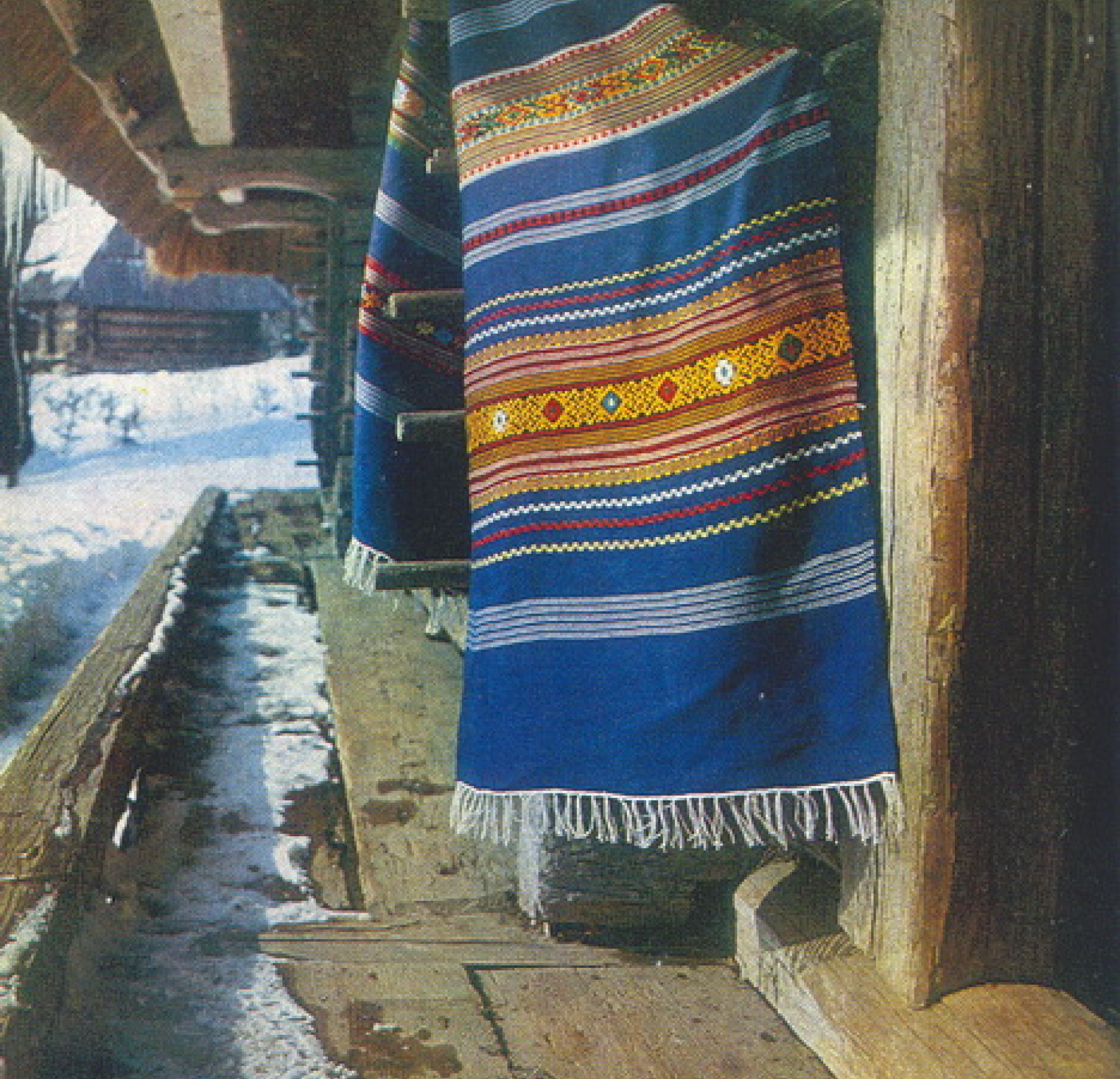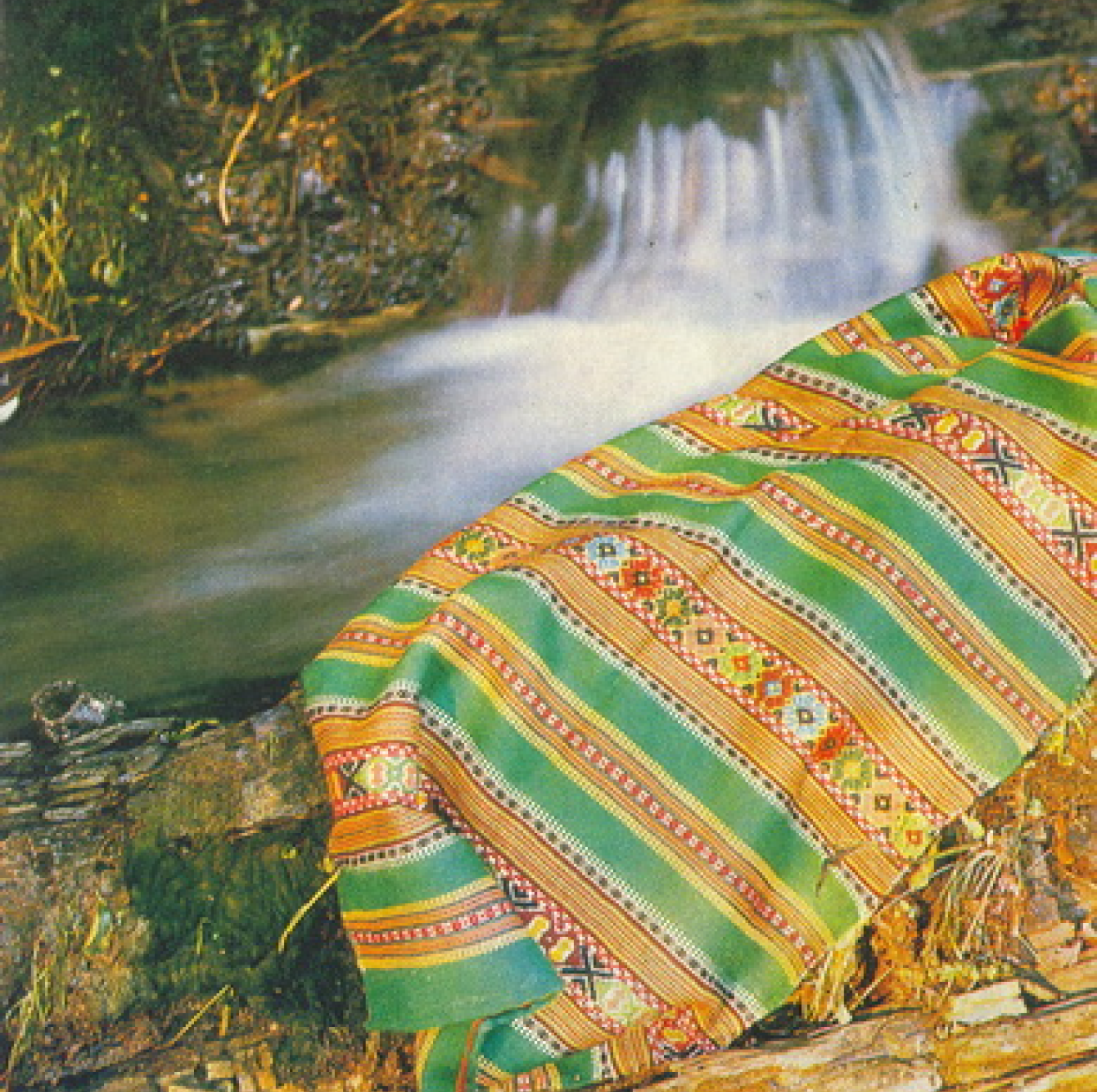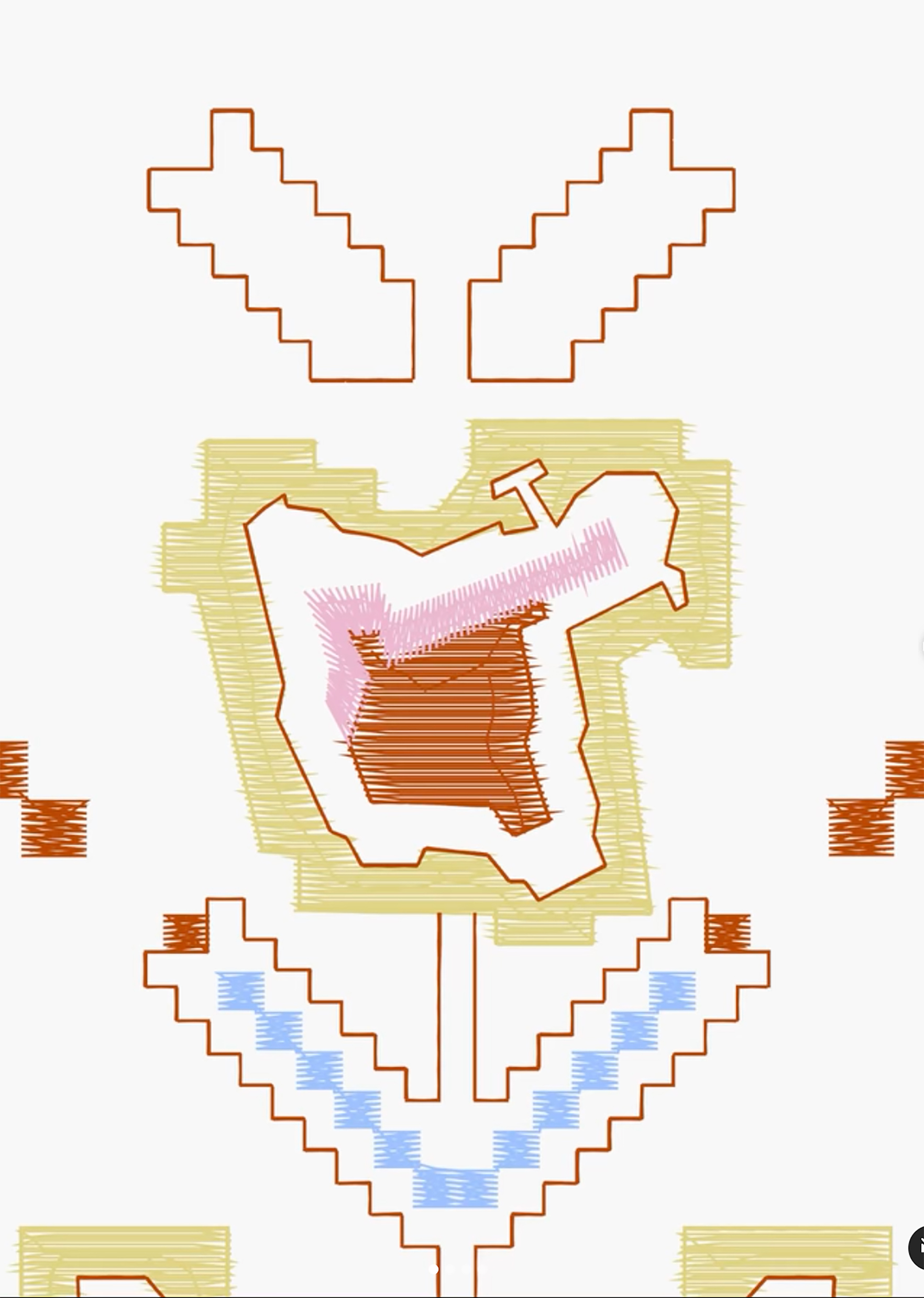Embroidery
The everliving craft
Hanna Vasylaschuk’s page in UA
Etnodim’s collection
Embroidery tradition in Ukraine is centuries old. Clothes and interior textiles are decorated with intricate emroided ornaments, often specific to the region they were made in.
One of the recognized artists is Hanna Vasylashuk (Ганна Василащук). She is known for mapping the poetry to rushnyky – embroidered towels. Between 1965 and 1967, she created over 150 works mapping the poetry of Taras Shevchenko – a Ukrainian national poet, also known as the father of Ukrainian national idea. In Vasylashuk's textiles, specific patterns of each cloth correspond with the words of his poems. The visual rhythm of the textiles matches the poetic one; the patterns' size, proportions, and colors change according to the story.



There is no documented legend of the symbols embroidered by Vasylashuk. However, the artist's daughter, Maria Vasylashuk, continues the tradition by creating her own textile and telling people about the meaning behind her mom's works. According to her, different motifs of the poems are mapped through combinations of pattern and color.
For example, one of the most recognizable motifs is the pattern of the Danube. In Ukrainian folklore and Shevchenko's poetry, the Danube is the general name for a river. Vasylashuk would embroider a stripe of Danube pattern every time a river would be mentioned in a poem. It is a diamond-shaped, wave-like pattern stitched in white on a bright-blue background.
Blue often stands for water in Vasylashuk's works. Green can symbolize nature or a valley, so typical for the area the artist was from. Red always represents blood. Black is usually used to mark sad events and death. The combination of the yellow pattern on the black background means betrayal. Bright colors represent glory; cheerful poems are more colorful and use little black.
The octagram-shaped star symbolizes mother or Ukraine; it is usually embroidered with stitches of vivid colors, except for when the storyline is tragic. This is the case with the 1976 work called Ой, три шляхи широкії – Oh, the Three Wide Paths. It tells the story of three brothers who went abroad, leaving their loved ones behind. The three lines in the center represent the brothers' three separate paths. The octagram stars symbolize the mother, abandoned by three of her children; hence some of the stars are black. The smaller stars embroidered as two paths on the side of the main one tell about the sister and the newlywed that one of the brothers left behind.
For example, one of the most recognizable motifs is the pattern of the Danube. In Ukrainian folklore and Shevchenko's poetry, the Danube is the general name for a river. Vasylashuk would embroider a stripe of Danube pattern every time a river would be mentioned in a poem. It is a diamond-shaped, wave-like pattern stitched in white on a bright-blue background.
Blue often stands for water in Vasylashuk's works. Green can symbolize nature or a valley, so typical for the area the artist was from. Red always represents blood. Black is usually used to mark sad events and death. The combination of the yellow pattern on the black background means betrayal. Bright colors represent glory; cheerful poems are more colorful and use little black.
The octagram-shaped star symbolizes mother or Ukraine; it is usually embroidered with stitches of vivid colors, except for when the storyline is tragic. This is the case with the 1976 work called Ой, три шляхи широкії – Oh, the Three Wide Paths. It tells the story of three brothers who went abroad, leaving their loved ones behind. The three lines in the center represent the brothers' three separate paths. The octagram stars symbolize the mother, abandoned by three of her children; hence some of the stars are black. The smaller stars embroidered as two paths on the side of the main one tell about the sister and the newlywed that one of the brothers left behind.



Vasylashuk's work continues a long-lasting tradition of mapping cultural messages in textiles. The traditional visual symbols of embroidery are preserved and further developed by society nowadays. In 2022, Ukrainian brand Etnodim created embroidered shirts Smilyvist (lit. 'Courage') and Yednist (lit. 'Unity') with the ornaments of Ukrainian hero cities. The shirts contain embroidered geographic outlines of some Ukrainian cities that have suffered the most in the war; together, they form a flowering geometric Tree of Life as an old symbol for eternity and fertility. Embroidered images of people represent family and unity; geometrized flowers stand for fertility; bright linear borders around each outline map the unity of the people of Ukraine. Through the traditional craft, Etnodim shirts map identity-shaping events of the present. This example shows how national identity in itself is a form of a narrative that can be mapped in visual language.


